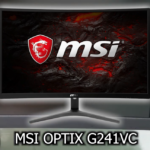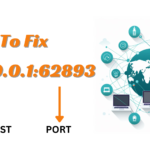What Does 127.0.0.1:62893 Mean? How to Fix Errors
This guide will walk you through the significance of knowing 127.0.0.1 in networking and why some port numbers are more important than we may first believe, all the while keeping safe digital surroundings and covering typical troubleshooting situations.
Have you ever found yourself squinting at a series of numbers like 127.0.0.1:62893 and scratching your head in perplexity? In that boat, you are most definitely not by yourself. The first time I saw this, it seemed that I had wandered into a strange universe of symbols and codes. Interestingly, 127.0.0.1 isn’t just any random string of digits; it’s a loopback IP address or localhost, a handy tool for software developers to test their apps directly on their devices without an internet connection.
And 62893, which comes after it? That finds a specific route (port) that makes it possible for programs on your computer to communicate effectively with the local host. I have gathered thoughts to assist in clarifying what these phrases imply and why they are so important in our digital lives after reading through research materials and thinking back on my own experience navigating these ideas. Are you, therefore, prepared to sort it all out? Into the deep end!
Understanding 127.0.0.1:62893
When the target computer port cannot be connected, the error 127.0.0.1:62893 shows. Two main parts define this error code. We call 127.0.0.1 a local host. This relates to your personal computer and operates in a loopback address-like fashion. See it as a dialogue one has inside. Port number 62893 fulfills several roles as a data transmission and receiving gate. Though not as often used as other ports, Port 62893 is occasionally used by the caching system Memcached.
The Role of 127.0.0.1 in Networking
I found out that 127.0.0.1 is more than just a string of numbers; it’s a computer network’s loopback address. This means that my computer talks to itself using this IP address to test out network services without having to connect to the internet. It’s like chatting with only you; no one else can hear. By putting 127.0.0.1 into my web browser, I can see how web development tools or software will look on the real internet while running on my computer.
Using this unique IPv4 address has taught me how computers use internal methods to talk to each other before sending data to other computers on the same network or the internet. I learned how important 127.0.0.1 is when setting up servers like Apache or Nginx on my device for testing. It’s like having a whole web server environment at my fingertips without worrying about hackers or malware lurking around public IPs!
Application of Port 62893 in Local Systems
In computing, port 62893 functions as a kind of data secret door. It is in the short-lived port range, which computers utilize for specialized functions. Consider yourself writing a letter to someone in a large building. You would give an office number rather than merely addressing it to the building. Port numbers ensure data gets to the correct location inside your computer by doing just that.
I have easily directed traffic to where I need it in my software development process. This specific port facilitates faster-than-ever program development and testing on local systems. Consider it as having a private testing area that is undetectable by outside disturbance and exactly replicates actual conditions.
Using 127.0.0.1:62893 keeps everything constrained and controllable, whether configuring web server environments or performing simulations with WordPress or Apache. Your project is safe as you poke, prod, and polish it until it’s ready to confidently enter the actual online world, much like having an invisible bubble surrounding it.
Is 127.0.0.1:62893 A Safe site?
Multiple security vulnerabilities in the 127.0.0.1:62893 could allow someone to access your system if there is a problem with the memory cache. Apart from this, by conducting DoS against the port, fraudsters can overwhelm and break your machine. They will also be granted illegal access to your device.
Troubleshooting Common Issues of 127.0.0.1:62893
Have trouble with your local network setup? I’ve got some tricks to help you fix common connectivity problems. Whether it’s a glitch in connecting to your internet host or issues sending an HTTP request, I’ll show you how to get back on track. Consider your computer as a web server operating through ports; occasionally, a small change is all it needs. And relax if terminology like “TCP/IP model” or “commands prompt sounds complicated—I’m here to break them down for you.
Let’s start working on those bothersome problems so you may enjoy a flawless and safe online presence. Continue reading; I swear it gets simpler!
- Verify whether the platform or application you are trying to use currently runs on your device. Make sure it starts up correctly, whether it is a development tool or a web server.
- Verify whether the program is using port 62893. Sometimes, the difficulty arises from trying to reach the wrong port.
- Your computer’s firewall can be blocking access to port 62893. Review your firewall settings to guarantee localhost’s port is reachable for local traffic.
Solutions for Occurring Problems
If you wish to correct the occurring issues due to this IP address, then follow these listed measures.
- Start the service if it’s off: Development and web server work frequently involves scripts or commands.
- Open Windows Control Panel: Open Windows Defender Firewall, Advanced Settings, Inbound Rules, System and Security. Add port 62893 regulations.
- Mac/Linux users can alter firewall setups using Terminal commands, similar to IP tables.
- Consider port settings if your software uses 62893. In case of port conflict or other services utilizing the same port, do this. You can usually accomplish this under the program’s configuration settings.
- Check application-specific settings: Certain programs require additional settings. Check the program documentation to make sure all settings are set appropriately.
- A firewall exemption may be needed to allow port 62893 traffic. The instructions vary by OS.
- Use of on Unix/Linux or Netstat on Windows to find apps listening on port 62893. The program may have a configuration issue if no application uses the port.
Takeaways
Finally, exploring localhost and port numbers like 127.0.0.1:62893 provides a fresh perspective on our digital environment. I have shown how we use this unique address to test applications and maintain our systems operating correctly. We covered how to handle typical problems and protect our ports, such as 62893, from dangers. This trip has demonstrated to us the ability of local development environments to improve, expedite, and protect all parties concerned in software. Recall that we stand on the shoulders of giants every time we utilize these tools—the folks who put the internet together. Together, let us keep learning, testing, and protecting our digital world.
FAQs
Can one safely open port 62893 to the public?
Any public port is usually fraught with security hazards. 62893 may not be harmful as such, but it’s best to keep it closed on machines that are open to the public unless absolutely required.
Which alternate ports are utilized for development?
For HTTP traffic, common substitutes include port 80; for HTTPS, port 443; and development servers, port 3000.
Which programs use which ports, and how can I find out?
Programs using certain ports can be found using operating system utilities such as lsof (Linux) or netstat (Windows).
What if 127.0.0.1:62893 keeps giving me problems?
More particular troubleshooting advice suited to your circumstances can be obtained by reading the software’s documentation, visiting internet forums, or asking for help in technical communities.

















